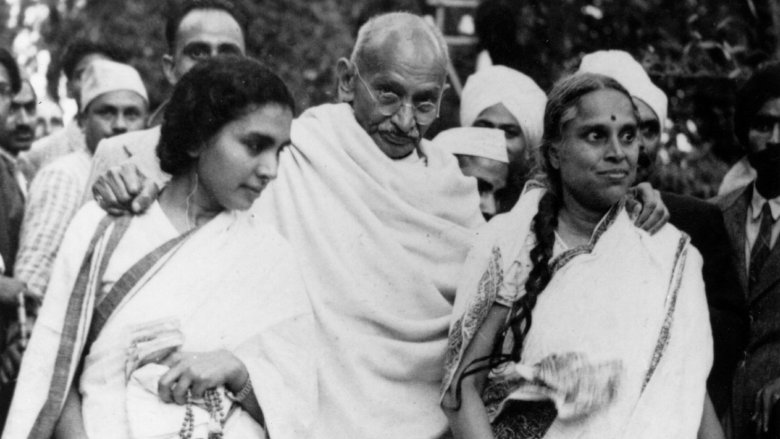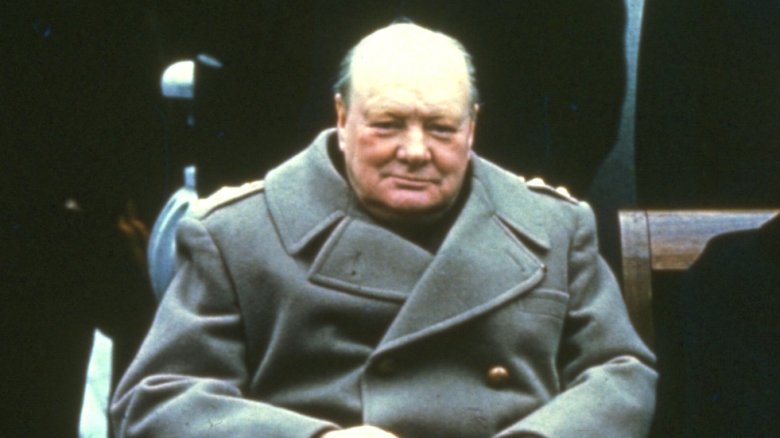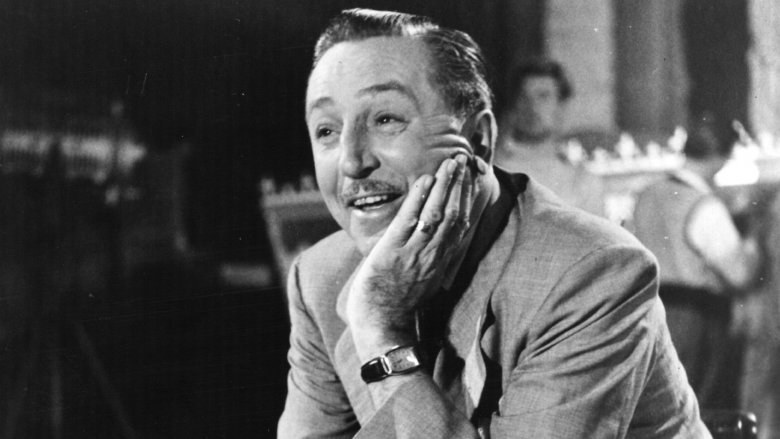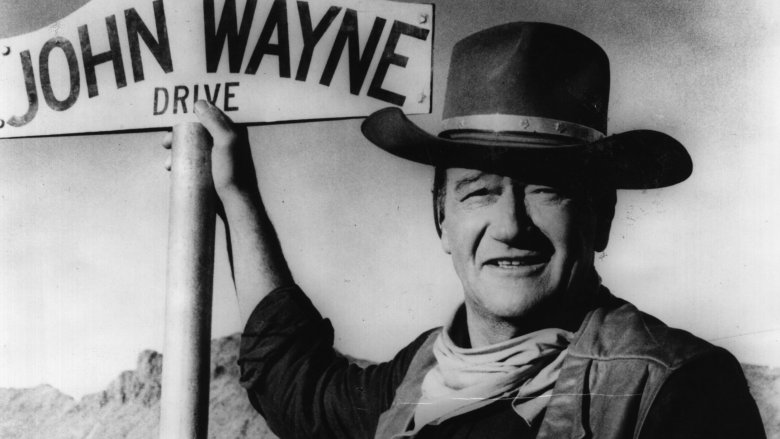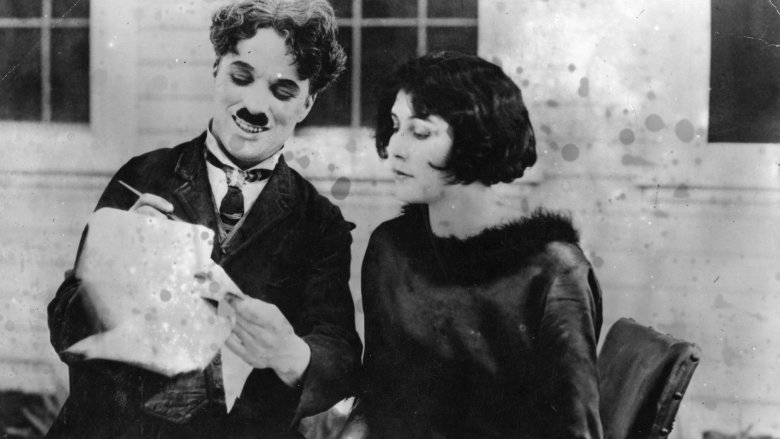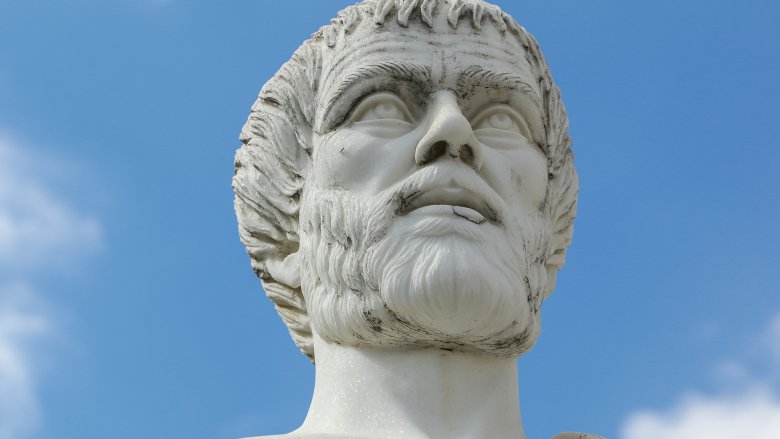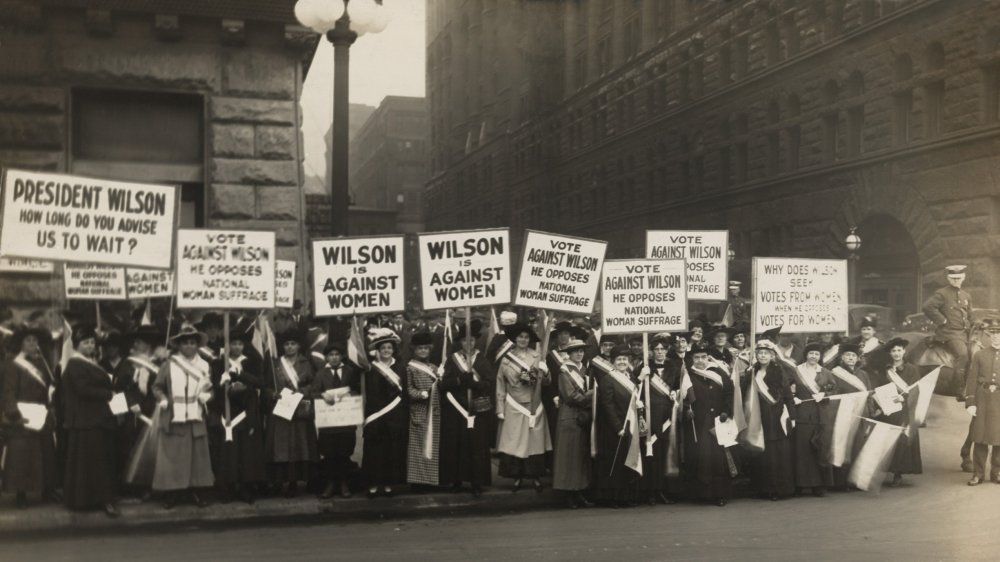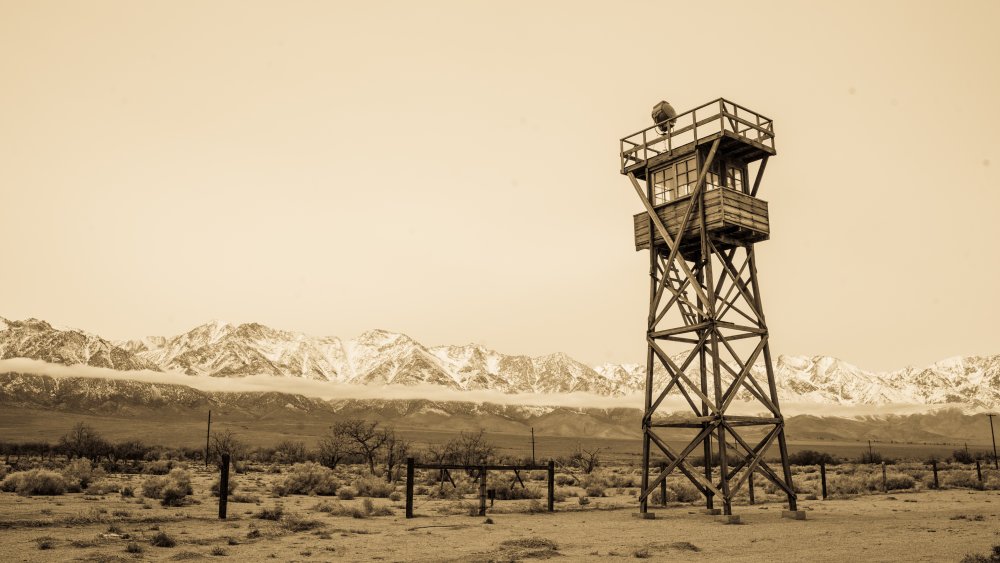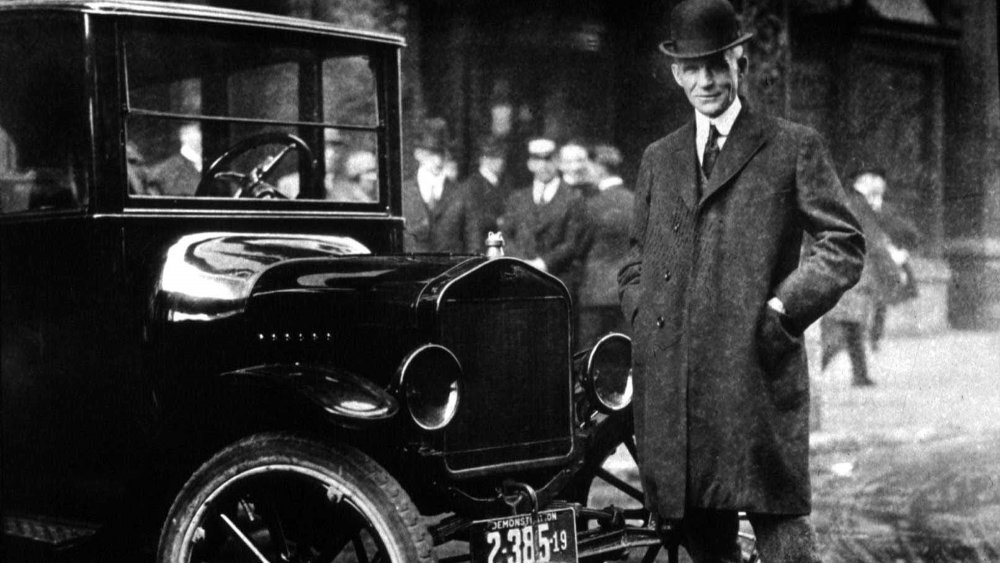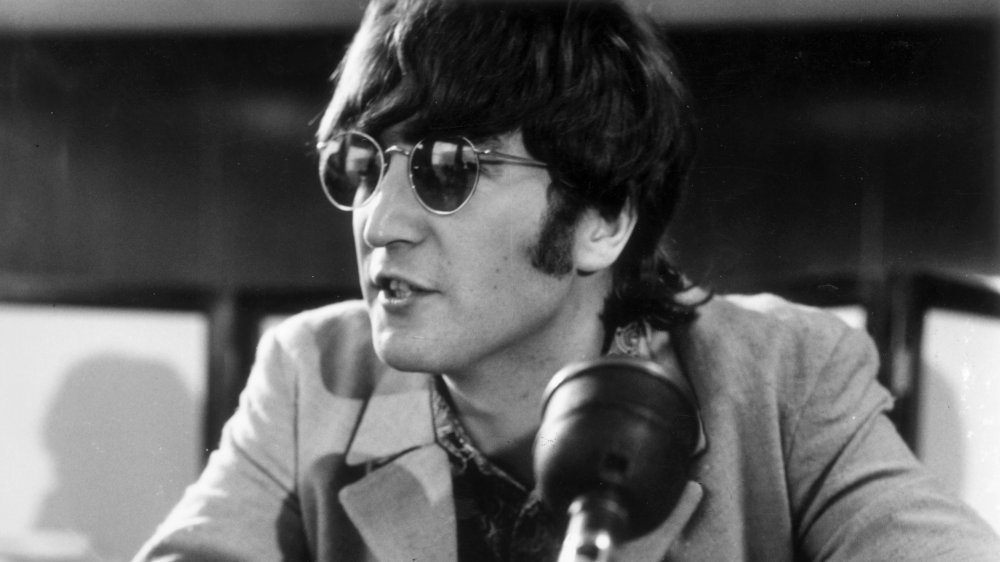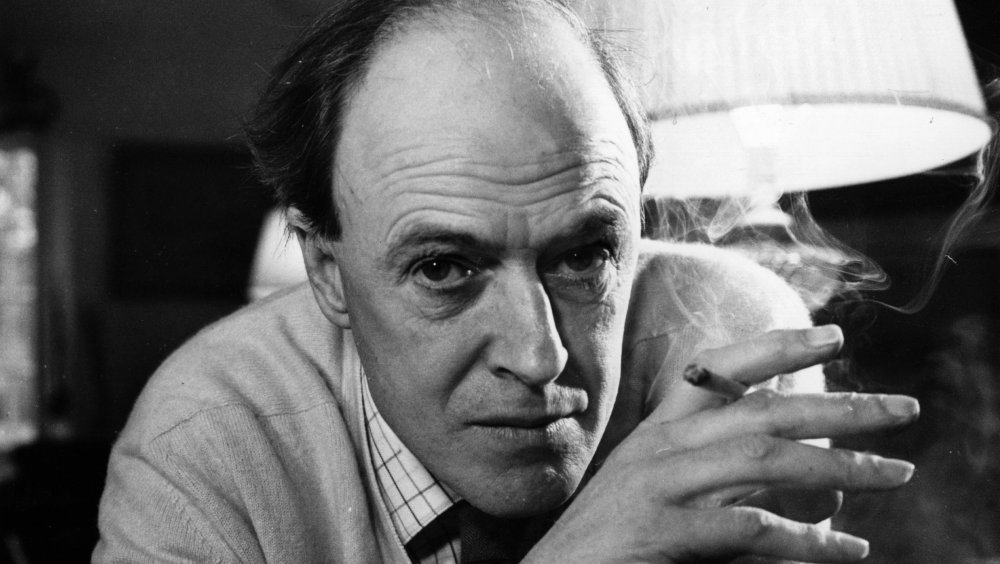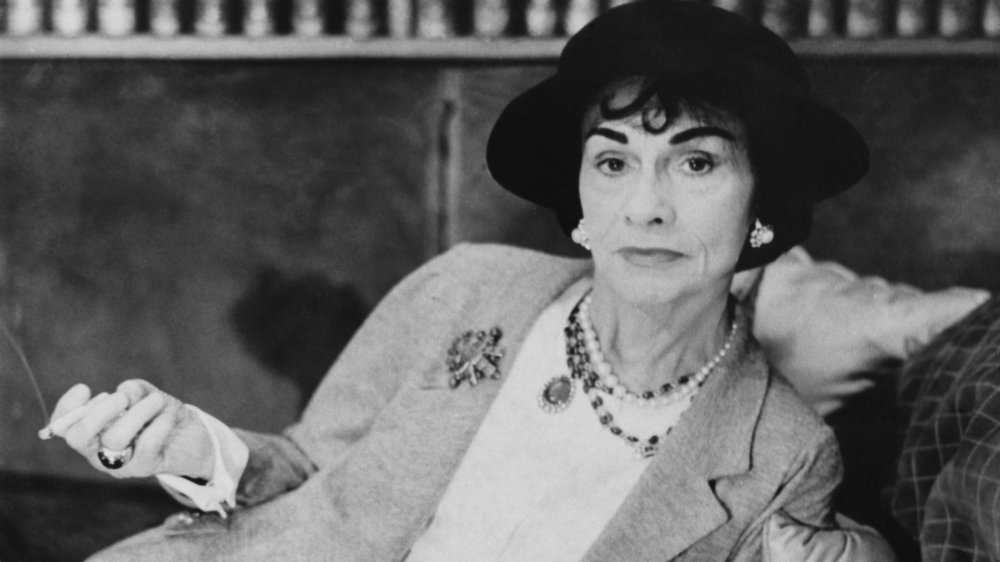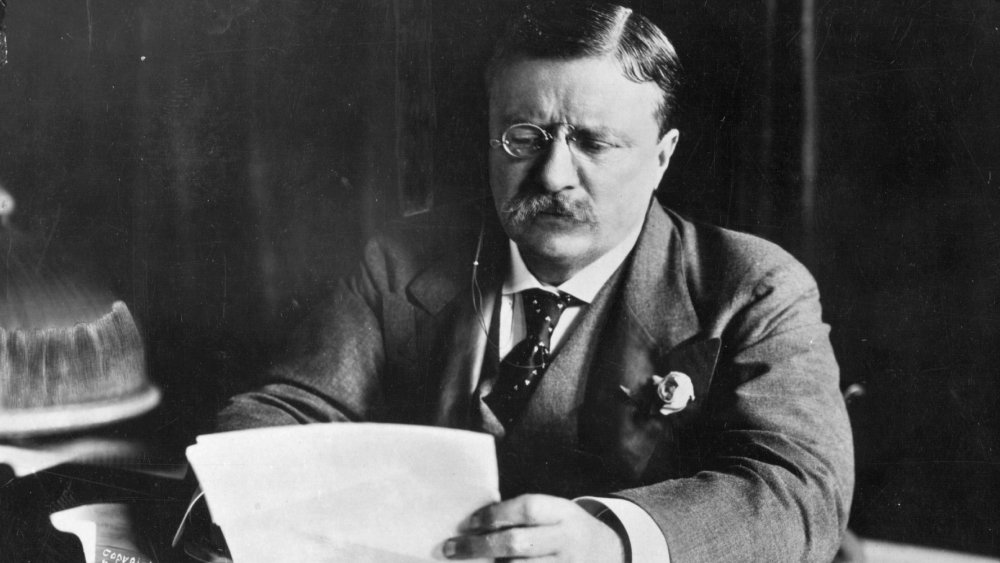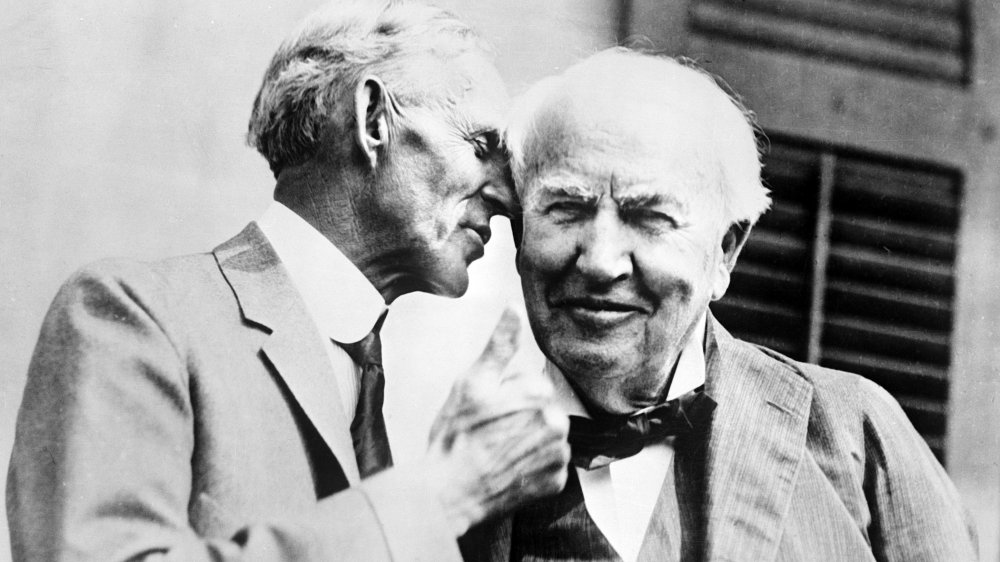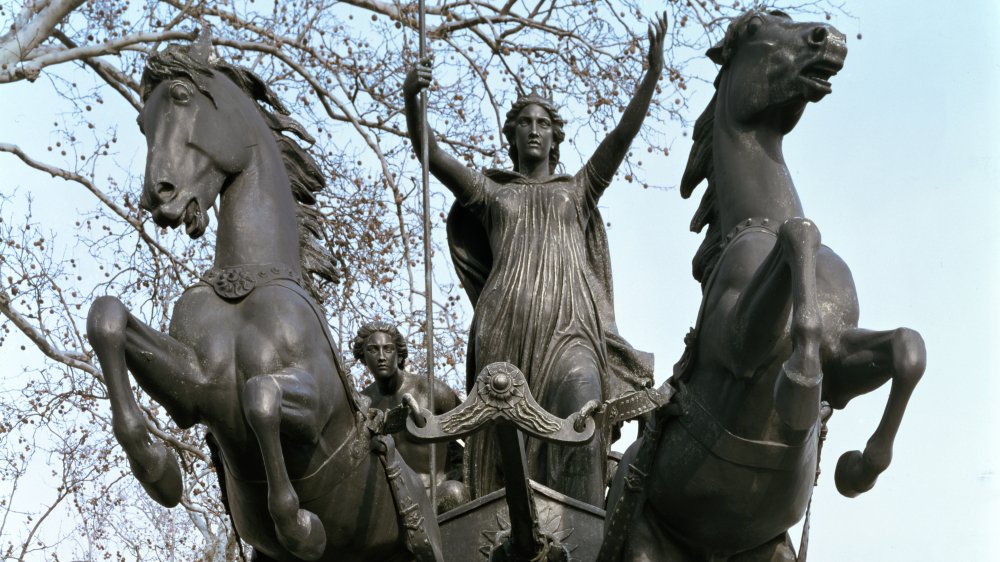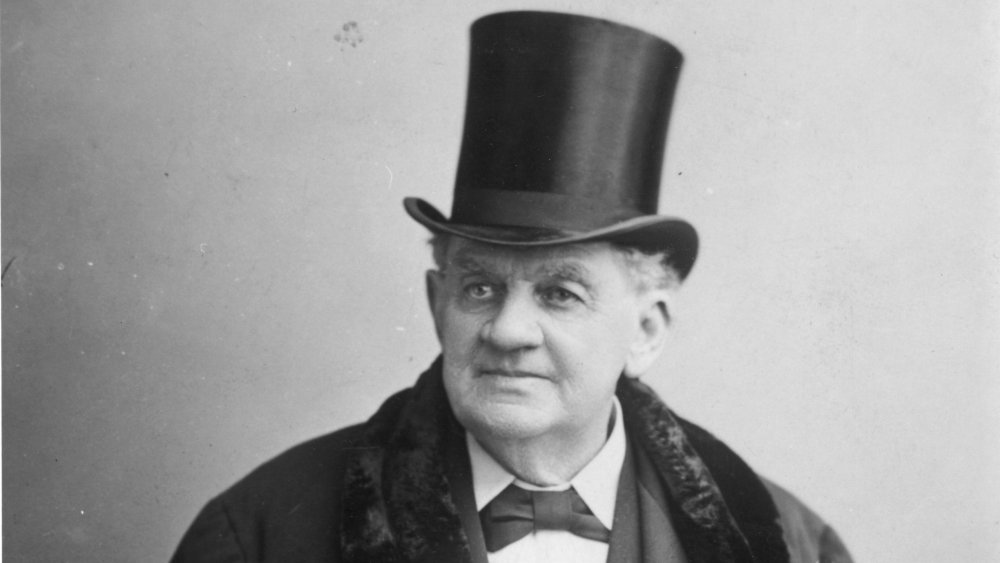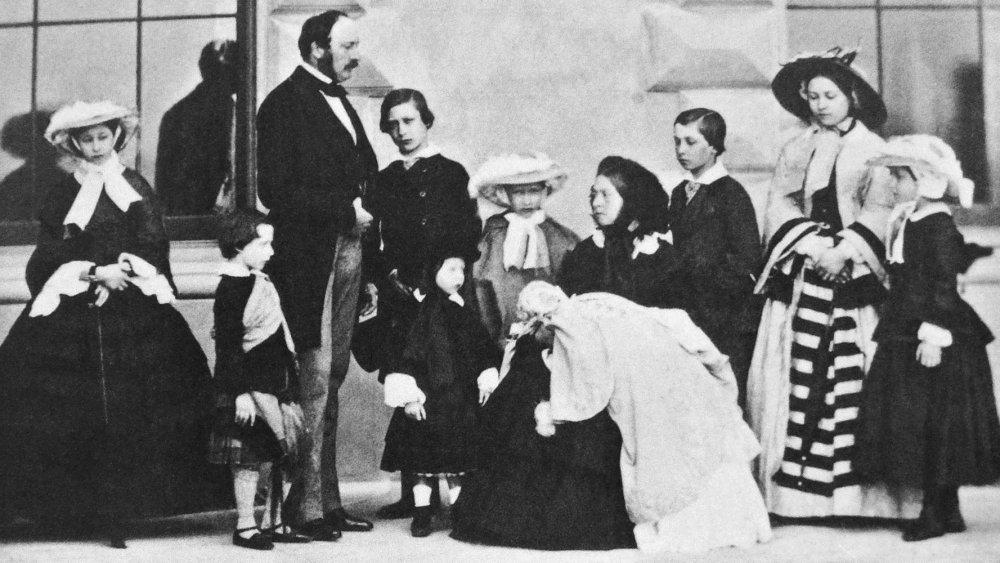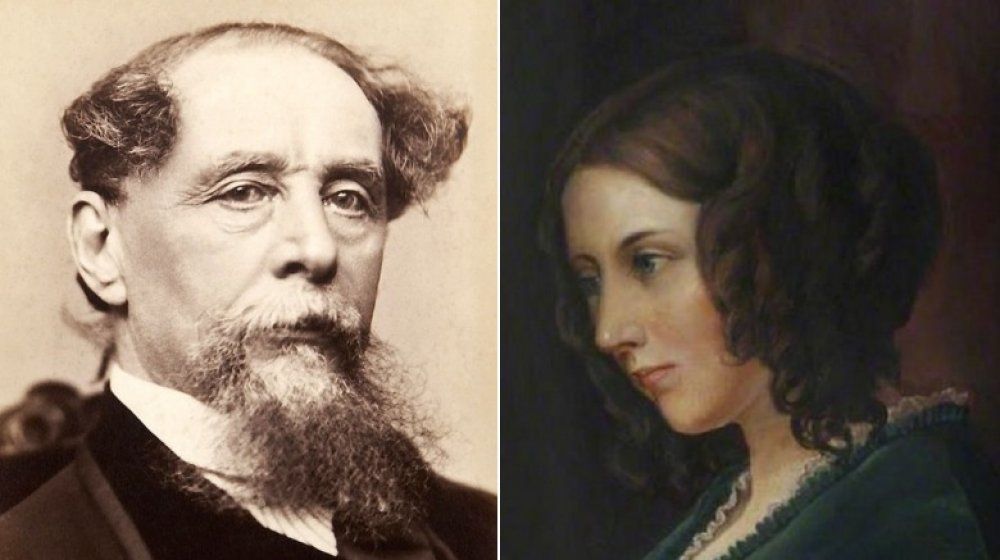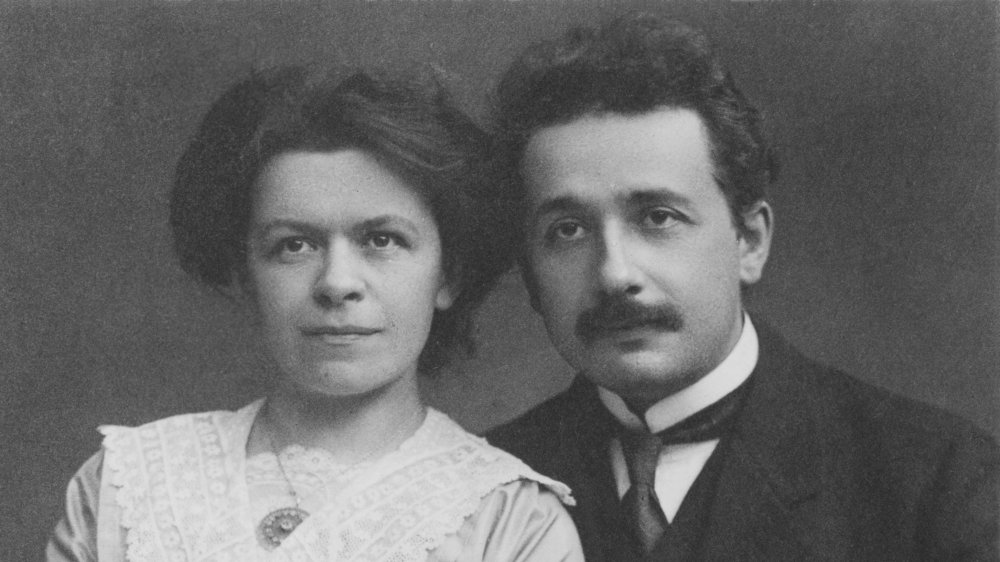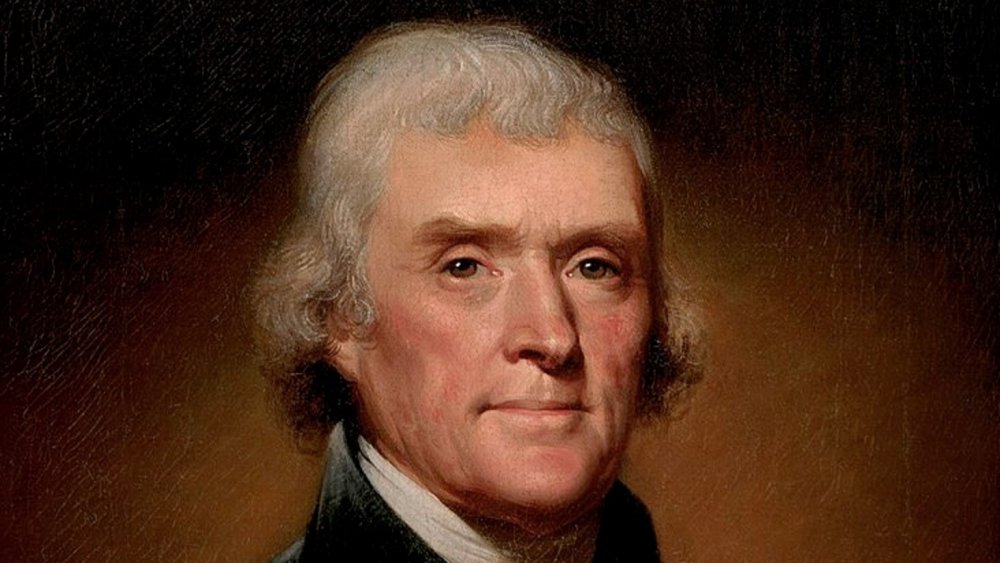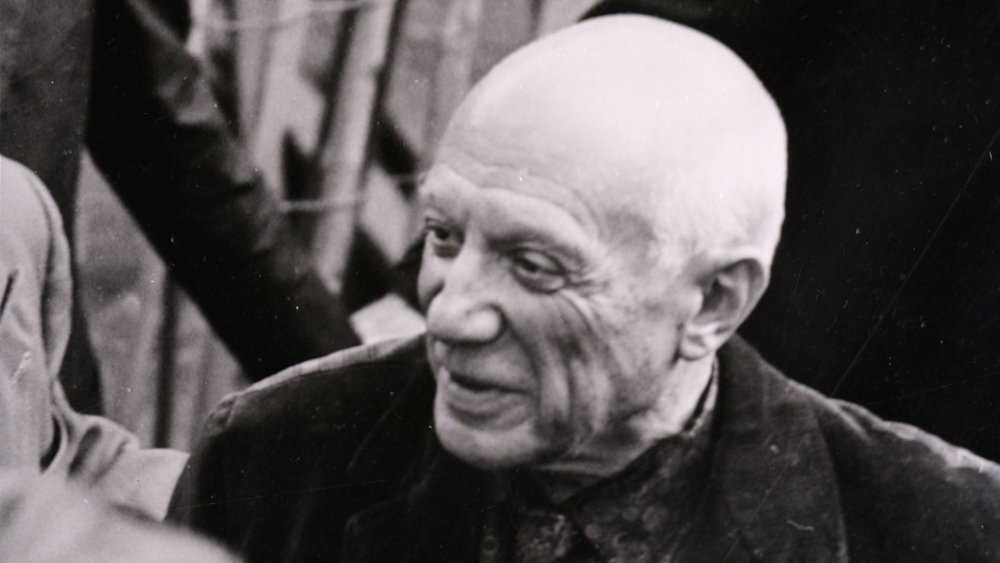Respected Historical Figures Who Were Actually Terrible People
Nobody's perfect, but some people aren't even close. This includes some of the most beloved figures in all of history — they look great at first glance, but a closer look reveals the deeply flawed, kinda terrible people they really were. These folks from history were downright awful.
Gandhi
Mahatma Gandhi, probably one the ten most peaceful men of all time, had a much bigger problem than the British ruling India. According to Gandhi biographer Jad Adams, writing for The Independent, Gandhi was actually quite the sex addict — he even left his dying father's side just to have sex with his wife. He was fifteen at the time, she was sixteen, and the grief of abandoning his father caused him to abandon "lustful love" forever. Kind of.
At age 38, he took an official vow of chastity, but regularly tested it in unusual, creep-tastic ways. His preferred method was to sleep with women, while naked. That might sound to you very unchaste, and you'd be right. But it was okay, because apparently nothing lustful happened. A middle-aged man simply slept naked with girls way younger than him, some as young as eighteen, and sometimes he would sleep naked with multiple young girls at the same time. Nothing weird about that.
Of course, this behavior wasn't acceptable for anyone else — in his mind, every Indian should practice strict chastity, to the point of never marrying. If they must marry, they should never have sex with their spouses. His married followers, meanwhile, were segregated on his compounds, told to never have sex, and should take cold baths if ever they feel their mojo rising. That's the real Gandhi — great for Indian independence, bad for keeping the young women in your life company.
Winston Churchill
We all know Winston Churchill for his efforts in fighting the Nazis during World War II. But as it turns out, he was a white supremacist who had way more in common with his enemies than history wants to let on.
According to Richard Toye's book Churchill's Empire, young Churchill took part in what he called "a lot of jolly little wars against barbarous peoples" in Africa, and believed they were violent against the British not because the Brits were invading their land, but because they had a "strong aboriginal propensity to kill." Later, when he joined Parliament, Churchill advocated more war against minorities, claiming that "the Aryan stock is bound to triumph." Of the Kurds, who tried to gain independence from Britain, he said "I am strongly in favor of using poisoned gas against uncivilized tribes ... [it] would spread a lively terror." Jolly little wars, a lively terror — who knew Churchill spoke exactly like a 1980s cartoon villain?
Then there was Gandhi's quest to free India from British rule. Churchill didn't like that, calling for Gandhi's murder (by elephant!) shortly after he rose to prominence in the late 1920s. It wasn't just Gandhi, though — Churchill openly admitted, "I hate Indians. They are a beastly people with a beastly religion." He didn't mellow out as he got older — in 1943, in between rousing speeches about never surrendering, he refused to help India survive a severe famine that ultimately killed around 3 million people. Churchill blamed the Indians, saying it was all their fault for "breeding like rabbits." No wonder President Obama didn't want that man's bust in the White House.
Walt Disney
He created Mickey Mouse, so how bad could Walt Disney really be? Plenty bad, as it turns out. He was more Wicked Witch than Snow White.
As Neal Gabler exposed in his biography Walt Disney: The Triumph of the American Imagination (as summarized by Vulture), Walt certainly had his racist side, and not just because he let Song of the South happen. He was reportedly the kind of person to, in meetings, refer to the Seven Dwarves as a "n***** pile," which isn't just terrible, it doesn't make any sense. He also used terms like "pickaninny" in meetings, which was an old-time (and offensive) term for black children. Don't ever use it.
Then there was his issue with women. As Ward Kimball, one of Disney's associates, said, "He didn't trust women or cats." (What's wrong with cats, pray tell?) Then there's a letter Disney sent a woman named Mary Ford, who wanted work as an animator. Was she good? We don't know, but Disney didn't care either way — he rejected her outright, because women simply didn't do that kind of work for him. In the letter's own words, "Women do not do any of the creative work ... as that work is performed entirely by young men. For this reason, girls are not considered for the training school." Snow White and the Seven Dwarves appear on the letterhead, almost like they're mocking her for her silly woman chutzpah.
Steve Jobs
If you own anything Apple aside from an actual apple, you owe a debt of gratitude to Steve Jobs. That said, he probably shouldn't be put on the lofty pedestal he so often is. He was ruthless.
According to CBS News' write-up of Alex Gibney, who created the documentary Steve Jobs: The Man in the Machine, Jobs was basically a jerk through and through. He fathered a daughter, but denied she was his, and so she didn't see him for years. He contracted Apple with Chinese factories, whose conditions were so bad they drove the workers to exhaustion — several wound up committing suicide over the breakneck pace they were expected to churn out iPads and iPhones, among other devices.
There was also an issue with Apple stocks, in that Jobs was allgedly illegally backdating them in hopes of cashing in. When questioned about it by the Securities and Exchange Commission, he first denied it, then said he had to ask Apple's board of directors for extra "thank you" stock, then later turned the blame on his Chief Financial Officer. That's how Jobs would admit something bad happened: by saying someone else did it.
Caravaggio
Caravaggio was a highly respected Renaissance artist — he painted Judith Beheading Holofernes, for one famous example. He was also a murderer, which is less respectful.
In 2002, Andrew Graham-Dixon put out a Caravaggio documentary on BBC that (as recounted by The Telegraph) exposed why Caravaggio killed a man named Ranuccio Tomassoni. It's been long accepted that Caravaggio killed Tomassoni in 1606, but most thought it was due to an argument over a tennis match. Well, according to new evidence put forth by Graham-Dixon, the issue wasn't Caravaggio being a bad sport — it was a woman. Specifically, a prostitute. Apparently, Caravaggio had a woman named Fillide Melandroni over for a painting session, and fell for her. Problem was, Tomassoni was her pimp, and Caravaggio took umbrage to this. He felt inclined to fight for her honor, which meant castrating Tomassoni. Roman custom, at the time, dictated that if a man felt his woman was being insulted by another man, he would cut the offender's penis off. It was a tough era.
The problem, as it turned out, was that Caravaggio wasn't very good at castration. He grounded Tomassoni and attempted to sever his manhood, but either the victim moved, or Caravaggio was simply clumsy. Either way, it appears Caravaggio severed his opponent's femoral artery instead, causing him to bleed out and die. So there you have it: Caravaggio killed a pimp by slashing an artery when he meant to slash his babymaker, and that's why they never named a Ninja Turtle after him.
Mother Teresa
It's borderline blasphemous to criticize Mother Teresa, or Saint Teresa as of September 4, 2016. Did anyone in history do more to help the poor and the sick? Yeah ... she maybe wasn't that great. As reported by the Times of India, Mother Teresa's true motives were actually kind of selfish, with less focus on helping people and more on boosting the numbers for her own religion.
Mother Teresa's missions, despite having tons of charitable donations at their disposal, rarely — if ever — actually helped poor, sick people become healthy. In fact, most of these places, according to a 2013 paper published in Studies in Religion, were dirty, short on doctors, low on food, and largely bereft of painkillers. Nevertheless, Teresa found the suffering beautiful, like it was making the world a better, holier place. We know this because she said it to the famously anti-religious writer Christopher Hitchens: "There is something beautiful in seeing the poor accept their lot, to suffer it like Christ's Passion. The world gains much from their suffering."
Naturally, this didn't apply to Teresa herself, who, according to Hitchens, would regularly get care at good, American hospitals when sick. Apparently, the world would've gained nothing if she suffered.
But Teresa's true goal was to use her charitable efforts to convert people to Roman Catholicism. Remember how she invoked "Christ's Passion?" That's because she truly felt that the poor, the sick, and the suffering were akin to Jesus on the cross. If they suffered as He did, in her mind, that would bring them closer to Him. It would seem she skipped the parts in the Bible where Jesus actually healed sick people.
Martin Luther
Martin Luther's claim to fame is his 95 Theses and the Protestant Reformation. But apparently he felt just as strongly about Judaism. In fact, he felt the religion was evil and should be destroyed because the sad truth is that Martin Luther was a huge, highly dangerous anti-Semite.
In 1543, Luther published a book entitled On the Jews and Their Lies, about why Jews are, in his words, a "rejected and condemned people" who do nothing but lie and blaspheme and who needed to be saved from themselves. And by "saved," Luther pretty much meant that good Christians needed to utterly destroy Jews' lives until they decided to convert.
He offered up several things these so-called good Christians could do to "convince" the Jews that Jesus is the way. Such niceties included burning down synagogues and "bury[ing] and cover[ing] with dirt whatever will not burn, so that no man will ever again see a stone or cinder of them." Also, he called for the burning of Jewish houses, so they couldn't live anywhere either. Their prayer books and religious writings should be confiscated, and rabbis banned from teaching anything, entirely because Luther felt the god he believed in would've wanted it that way.
So now they're homeless and have no place to worship — what's next? Well, according to Luther, you then ban them from traveling on highways, because if they did so, they would commit usury (loan sharking). "Let them stay at home," wrote Luther, the same guy who just called for Jewish homes to be burned to the ground. Finally, Luther advocated confiscating all their money, only giving it back to them (in an allowance) if they have "sincerely converted" to Christianity. It's sad but true — the beloved Martin Luther outright advocated fundamentalist terrorism.
John Wayne
John Wayne's reputation as a badass man's man gets tainted real fast once you hear his views on anyone who wasn't white. Yep, the rough-n-tough cowboy was a full-blown racist.
In a 1971 interview with Playboy magazine, Wayne admitted he didn't like African-American people (or "the blacks" as he constantly called them) being in charge of anything because white people are apparently the only people who know what they're doing. As he said in the interview, "I believe in white supremacy until the blacks are educated to a point of responsibility. I don't believe in giving authority and positions of leadership and judgment to irresponsible people." He also railed against black people getting too many opportunities. He felt that "Hollywood studios are carrying their tokenism a little too far," and that minorities should only get roles meant for them. Like slaves — Wayne actually claimed to be inclusive because he "had a black slave in The Alamo." To that, you might say, "well, it's a start," but honestly, it's not.
Wayne also had a problem with Native Americans. In that same Playboy interview, Wayne opined that white people grabbing America from the Native Americans was good, because the Native Americans were hoarding it all for themselves. Seriously:
"I don't feel we did wrong in taking this great country away from them. ... There were great numbers of people who needed new land, and the Indians were selfishly trying to keep it for themselves." It takes a ton of gall to call genocide victims "selfish," but no one ever accused John Wayne of lacking the stuff.
Charlie Chaplin
The beloved "Little Tramp," Charlie Chaplin, wasn't nearly as goofy in real life. In fact, he was downright predatory, particularly with little girls. Two out of his four wives were under 18 when he married them, while another one was just 18 (and he was in his 50s at the time). The only one over 18 was 22, but he married her after she claimed to be 17. That's the opposite of a good look.
But if it's somehow not skeezy enough that he simply married underage girls, how about how the disrespectful ways he treated them? Take his first wife Mildred Harris, whom he married at 16 because he thought she was pregnant. (She wasn't.) She started getting movie offers, but Chaplin was an unsupportive husband, thinking she was too young to have any real talent. Not too young for him to romance, of course, but too young for anything else.
Then there's Lita Grey, whose poor treatment at Chaplin's hands was documented in her 1927 divorce papers, obtained by the London Times in 2015 (and recapped by the International Business Times). Chaplain impregnated Grey when she was 16 — he quickly suggested an abortion. When that failed, he married her, but treated her terribly. He would cheat on her with other young actresses, called her "lowly born and greedy" (according to the LA Times), paid little attention to their children, and would demand, as she put it, "revolting, degrading and offensive" sex acts, some of which were illegal at the time in California.
Grey got $825,000 in the divorce settlement, dirtying Chaplin's name at the time. Of course, time heals all wounds, which is why you don't hear this story much anymore. Until now, anyway.
Aristotle
The great Greek philosopher Aristotle was a wise man for sure, but when it came to women, he was a total misogynist who had zero idea what he was talking about.
According to Charlotte Witt's essay "Feminist History of Philosophy" in the book Feminist Reflections on the History of Philosophy, Aristotle held views of women that went beyond typical sexism. In his mind, women were hardly even human beings — at best, they were "deform[ed]" men. For some reason, he decided that women have fewer teeth than men (they don't), rendering them incomplete, and even though they give birth, they "contribute only matter and not form to the generation of offspring." In other words, they birth the kid, but only men can shape them into actual human beings. Of course, that can only happen if the child is a man because — and these are his direct words — "a woman is perhaps an inferior being." It seems like there was no "perhaps" about it in his mind, however.
Does this make Aristotle less of a brilliant mind? Not at all, but it does show how imperfect of a mind he had, and that even the wisest among us can have glaring blind spots.
Woodrow Wilson was an irredeemable racist
Woodrow Wilson is considered one of America's greatest progressive presidents: passing the first child labor laws, establishing the Federal Trade Commission, and codifying the eight-hour day. Wilson shored up antitrust laws, helped end World War I, and (sort of) supported women's suffrage. He was also severely racist.
Before entering politics, Wilson was an academic who had written several books. In his A History of the American People, Wilson said of post-Civil War laws providing Black Americans treatment equal to that of whites that "the dominance of an ignorant and inferior race was justly dreaded." As president, he actually re-segregated the federal government. According to historian Sheldon Stern, Wilson even personally fired all but two of the Black supervisors in federal service, replacing them with white people. "It was a menace to society itself that the negroes should thus of a sudden be set free and left without tutelage or restraint," wrote the president. During the postwar Versailles conference, writes historian Lloyd Ambrosius, Wilson killed a proposal for racial equality in the League of Nations.
The blockbuster, and epically racist, film The Birth of a Nation detailed the rise of the KKK. Not only did this cinematic love letter to the Klan get a private screening at the White House (the first ever), but the film opened with another Wilson quote, "there had sprung into existence a great Ku Klux Klan, a veritable empire of the South to protect the Southern country."
Joseph, son of Jacob, made an entire nation into slaves
The Old Testament (and the Torah, it's complicated), is not exactly devoid of plot twists involving deception and betrayal, often from the supposed heroes. Take Joseph, son of Jacob and possessor of the not-quite technicolor dreamcoat. Jacob had 13 children but favored Joseph. Joseph's jealous brothers sold him into slavery in Egypt, getting away with it by convincing their father that he'd been eaten by a wild animal. "But the LORD was with Joseph and showed him steadfast love," and he eventually rose to a position of power, second only to Pharaoh.
Joseph was in charge of the land and, having prophesied a famine, had accumulated great stores of food in preparation. When the hungry Egyptian commoners came to him for food, he sold it to them. When they ran out of money, he said, "Give me your livestock, and I will give you food." When they had no more livestock, they offered all they had left: themselves. "Buy us and our land in exchange for food. We with our land will become slaves to Pharaoh." Joseph accepted, and all of Egypt, except the priests, was now the property of Pharaoh.
Now, in all fairness, according to Genesis, the Egyptians were grateful — Joseph had saved their lives. And Joseph's family had joined him in Egypt by this point and ended up extremely prosperous, to boot. But surge-pricing food into literal slave wages is pretty terrible.
FDR created American concentration camps
Franklin Delano Roosevelt regularly makes lists of greatest US presidents. He was elected an unprecedented four times (which is now illegal), established Social Security, beat the Nazis, and (our personal favorite) ended Prohibition. And he did most of it from a wheelchair. However, some of FDR's decisions were less reasonable politics and more ... racist, anti-Semitic, and cruel.
When he took office, the country and world was in the midst of the Great Depression. To help combat this, FDR decided he needed gold. All of it. So he took it. From everybody. Every person in the country, citizen or not, had to surrender their gold or face prosecution. In 1936, Jesse Owens represented the United States at the Olympics in Germany, winning four gold medals. Owens was a Black man competing in Nazi Germany but, as he said later, "Hitler didn't snub me; it was our president who snubbed me. The president didn't even send a telegram." As thousands of European Jews tried to escape the coming Holocaust in Germany, FDR had them turned back — fearing, as Smithsonian Magazine reports, that they were spies.
The most debated decision FDR ever made, however, was to lock up roughly 120,000 Japanese Americans during World War II. Star Trek's George Takei, and his family, were interned for four years because, as he explained to Democracy Now, "We simply happened to look like the people that bombed Pearl Harbor."
Henry Ford was an anti-Semite who inspired Hitler
Henry Ford was one of America's greatest entrepreneurs and innovators, a man who literally changed the world. He not only transformed the way people get around by selling cars everyone could afford, but Ford also revolutionized industry by creating the moving assembly line. As Construction Literary Magazine said, "More than anyone of the industrial era, it was Ford that created a clear middle class."
Ford also hated Jews. As even the Henry Ford Museum says, "Ford's anti-Jewish sentiments ran deep." He bought a local newspaper in 1918, the Dearborn Independent. Two years later, the Independent began publishing Ford's anti-Semitic views. He would later publish his Jew-bashing articles together as The International Jew: the World's Foremost Problem, which would go on to sell millions of copies and be translated into a dozen languages.
Adolf Hitler referred to Ford in Mein Kampf as the only man in America uncorrupted by Jews, saying, "Only a single great man, Ford, to their fury, still maintains full independence." According to the former editor of the Dearborn Historian, Hitler gave an interview to a Detroit News reporter in 1931. The reporter asked Hitler about the large portrait of Ford the soon-to-be dictator had in his office, "I regard Henry Ford as my inspiration," was the reply. That probably explains why, as The Nation reported, Ford kept doing business in Germany during the war.
John Lennon beat women
John Lennon was half of one of the greatest songwriting duos and part of one of the most influential bands of the 20th century. The Beatles had 20 number-one hits, 34 Billboard top ten songs, and some of the most recognizable tunes on the planet. Gifted as he was, Lennon, however, was not the greatest guy. Even aside from marrying Yoko Ono and releasing Imagine, John did plenty that should make even the most zealous Beatlemaniac blanch.
Granted, John didn't grow up in ideal circumstances. On the other hand, that his dad left him is not an excuse for leaving his own son. That he physically abused his wife before leaving her is not only something he admitted to — he actually wrote it into one of the Beatles' better-known songs. "I used to be cruel to my woman, I beat her and kept her apart from the things that she loved," is a line in "Getting Better." As he explained to Playboy in 1980, "I used to be cruel to my woman, and physically... any woman. I was a hitter."
That John's first son, the one he abandoned, wouldn't hold his father in the greatest esteem seems obvious, but Sean Lennon, John's son with Yoko Ono, also had choice words about his dearly departed dad. In an interview with Rolling Stone, Sean said, "I think his greatest achievement was recognising that he was a macho a**hole and trying to stop it."
Roald Dahl was a racist jerk
Roald Dahl created fantastic stories enjoyed by generations of children all over the world. His characters aren't merely beloved — many are household names. Unfortunately, Dahl's dark humor and comic violence so many of us enjoy(ed) reflects something darker in him.
The creator of Willy Wonka was such a wanker that his wife, according to the BBC, called him "Roald the Rotten." Aside from just being a jerk, he cheated on her constantly, with her best friend, even while she was recovering from a stroke. The Harvard Review of Latin America records Dahl's response to his editor instructing him to revise the illustrations for The BFG to avoid stereotypes and caricatures as: "the negro lips thing is taken care of." The famous Oompa-Loompas were similarly edited in a new edition of Charlie and the Chocolate Factory. "It didn't occur to me that my depiction of the Oompa-Loompas was racist," said Dahl, "but it did occur to the NAACP and others ... which is why I revised the book." Weirdly, according to Dahl's widow, the character of Charlie was originally supposed to be a dark-skinned boy, not white.
Dahl jumped the bigoted shark with his anti-Semitic comments, though. For the 100-year anniversary of Dahl's birth, the Jewish newspaper The Forward compiled the five most anti-Jewish statements he publicly made and, well, here's an excerpt: "Hitler didn't just pick on them for no reason."
Coco Chanel was a Nazi spy
Coco Chanel is one of the world's most influential fashion empires, named after the famous French designer who originally founded the company. Chanel liked the high life and was known to associate with British aristocrats, French politicians, and German military officers in Paris during the Nazi occupation. Nazi gear was pretty haute couture, after all.
When war broke out, Chanel secured lodging at the Paris Ritz. After the fall of France, many Wehrmacht officers ended up living there as well, one of whom probably shared more than Coco's address. Not only was she in bed with a Nazi, but she was probably in bed with the Nazis. Coco Chanel was more than likely a spy for Germany. Snopes concluded that "the evidence appears to skew strongly in favor of Chanel's at least doing some information gathering for the National Socialists."
Apparently as business-savvy as she was anti-Semitic, Chanel possibly also took advantage of the Nazis' anti-Semitic laws. A French documentarian told The Jerusalem Post that Chanel, "with the help of the Nazis occupying France, went to great lengths to get rid of her Jewish associates." After the Nazis retreated from Paris in 1944, Chanel was under investigation as a collaborator, but a lack of evidence at the time prevented her prosecution. According to Newsweek, some historians have suggested that one of Chanel's high-profile pals, British prime minister Winston Churchill, intervened on her behalf.
Teddy Roosevelt wasn't so cuddly
Theodore Roosevelt is on Mount Rushmore, in between Thomas Jefferson and Abraham Lincoln. That's how highly Americans think of the president we know as Teddy. He passed food and drug safety regulations, started the American political tradition of environmental conservation, made the first worker's compensation laws, got the Panama Canal built, and won a Nobel Peace Prize. He was also a bloodthirsty nationalist and racist.
Teddy Roosevelt was an unabashed Western chauvinist. He wrote in Winning the American West that, "All men of sane and wholesome thought must dismiss with impatient contempt the plea that these continents should be reserved for the use of scattered savage tribes." Roosevelt believed in the literal supremacy of American civilization and defended practically any effort to expand that civilization. "I don't go so far as to think that the only good Indian is the dead Indian, but I believe nine out of every ten are," he said in an 1886 speech.
As such an ardent believer in the inherent superiority of America, Teddy encouraged American expansion overseas. When the US defeated Spain and took the Philippines as a colony, Teddy was a vocal proponent for civilizing the Filipinos by force, resulting in horrific war crimes and hundreds of thousands of dead Filipinos.
Che Guevera was a bloodthirsty executioner
Che Guevera is probably the only 20th-century revolutionary that people know by his face. A highly charismatic warrior who sacrificed his life fighting against imperialists, Che is an inspirational figure to many millions of people, which is kind of sad because chances are he'd want to kill most of the people wearing his face on a T-shirt.
Not even the most idealistic pacifist seriously thinks that the South American revolutions of the mid-century could have happened so quickly without a significant amount of violence. However, as the Independent Institute points out, Che seemed to relish in the bloodshed, making clear in his "Message to the Tricontinental" that successful revolution required "hatred as an element of struggle; unbending hatred for the enemy, which pushes a human being beyond his natural limitations, making him into an effective, violent, selective, and cold-blooded killing machine."
In his diary, as the Huffington Post reports, Che referred to South America's Black population as "those magnificent examples of the African race who have maintained their racial purity thanks to their lack of an affinity with bathing." He and Fidel Castro established labor and concentration camps in Cuba after the revolution for anyone needing to correct their "anti-social behavior," like capitalists, Afro-Cuban priests, and homosexuals. When setting up the new regime in Cuba and rooting out remaining "anti-revolutionary" elements, Che's orders were simple: "If in doubt, kill him."
Thomas Edison murdered an elephant
Thomas Edison has over 1,000 patents to his name and is described by the Library of Congress as "one of the most famous and prolific inventors of all time." The influence he had on the fields of electric power generation and mass communication affected the lives and livelihoods of billions of people. The advances he and his company made in sound recording and motion pictures created entirely new mediums for entertainment, changing human leisure time forever.
Thomas Edison's innovative spirit also manifested itself in shockingly terrible ways, however. For instance, his petty greed led him to become one of the internet's favorite villains for, if for no other reason, how he screwed over Nikola Tesla. Edison's ego and ambition also drove him to compete against another bright American inventor, George Westinghouse. Edison's company produced direct current (DC) machines, while Westinghouse manufactured alternating current (AC). Edison started a slander campaign against AC, claiming that it was dangerous. To prove the point, Edison encouraged the use of electricity in executions a procedure he called being "Westinghoused."
After a demonstration in which he electrocuted a dog, as related by Smithsonian Magazine, Edison told a reporter that electricity is a reliable form of death, but "the current should come from an alternating machine." Edison went on to stage live events to showcase the lethality of his AC executions using horses, cattle, and one condemned elephant named Topsy.
Boudica committed mass murder
In the first century CE, the Roman Empire was near the zenith of its power. In Britain, the Celtic Iceni tribe were nominal allies of Rome, but according to the Roman historians Tacitus and Cassius Dio, when the king died, Rome annexed the tribe, violently confiscating the wealth and properties of the leading Iceni families. The king's wife, Boudica, contested the Roman claims. Roman legions attacked her village and, as Tacitus records, "As a beginning, his widow Boudicca was flogged and their daughters raped." That's when Boudica went full Daenerys Targaryen on the Romans.
Paying taxes to their conquerors, seeing their young men conscripted to the military that oppressed them, and watching their ancestral lands and properties regularly taken, the Celts already hated the Romans. So the brutal and indecent treatment of two Iceni princesses by the Romans made raising an army of allied Celts fairly easy for Boudica. She gathered the tribes, and as Cassius Dio tells us, "Two cities were sacked, eighty thousand of the Romans and of their allies perished, and the island was lost to Rome."
Archaeological evidence clearly shows not only that battles were fought at the cities of Camulodunum (modern Colchester), Londinium (London), and Verulamium (St. Albans) in 60 or 61 CE, but that they were destroyed and every one of their inhabitants murdered. "These were not flammable buildings," archaeologist Philip Crummy told The Guardian, "But they were levelled. It was a murderous, determined, intensive and deliberate attack."
PT Barnum exploited slaves
According to author Robert Wilson, P.T. Barnum probably never said his most famous aphorism, "There's a sucker born every minute," but his business model certainly encapsulated it. P.T. Barnum spent decades as the greatest showman the world had yet seen, fooling the public and exploiting his workers.
In his museum and travelling circus, Barnum showcased the most outlandish specimens of biological diversity that he could find — or manufacture. The Fiji Mermaid, for instance, drew huge crowds to what was actually the head and torso of a baby monkey sewn to a fish tail and covered with papier-mâché. Possibly his most underhanded, yet hilarious, bit of fraudulence was the sign in his New York museum saying: "This way to the Egress." Many patrons didn't know that "egress" was just another word for "exit" and would walk out of the building and have to pay full price to reenter.
Barnum's most callous exhibition was also his first. Barnum leased an elderly slave woman, Joice Heth, claiming her to be the 161-year-old former nurse of George Washington. When Heth died in 1836, Barnum hosted an autopsy of her body in a New York saloon, charging 50 cents per person to watch. Smithsonian Magazine reports that Barnum, true to form, tried to rewrite history later in life, claiming he was not a racist. But as Barnum biographer Benjamin Reiss explains, "With Barnum you never know if that's part of the act."
Queen Victoria was a spiteful and controlling mother
Queen Victoria had nine children and 42 grandchildren, many of whom entered European royal families. (Queen Elizabeth II and her husband Prince Philip are both her great-great-grandchildren.) But Victoria was not maternal. For starters, she hated being pregnant: it interfered with her ability to rule, and according to the BBC, she experienced postnatal depression. She also wrote that she found babies ugly. None of this makes Victoria a terrible person — but the way she treated her children might.
Ironically, the child she treated the worst was the one that she most needed as Queen. The future Edward VII was a huge disappointment to both his parents because he struggled with his father Prince Albert's strict education system. The BBC reported that Victoria also mocked his appearance and intellect. Worse, after Albert died shortly after visiting Edward to deal with his affair with an actress, she blamed Edward for her beloved husband's death. She wrote, "I never can or shall look at him without a shudder," and refused to involve him in matters of state.
Her other children didn't fare much better. Victoria either ignored them or was unbearably controlling, trying to prevent them from leaving home. She banned her youngest daughter Beatrice from marrying, stopped speaking to her when she did, and eventually made the newlyweds live with her. She sent spies to monitor her grown children's activities, interfered with their parenting decisions, and called Vicky's pregnancy "horrid news."
Charles Dickens tried to send his wife to an insane asylum
Charles Dickens' long lasting fame comes partly from his era-defining stories and partly from his work bringing to light the plight of the poor, especially children, who had a rough time in Victorian England. But Dickens himself wasn't exactly warm-hearted and generous in his personal life.
Dickens married Catherine Hogarth, the daughter of his editor George Hogarth, in 1833, according to the BBC, and they ultimately had 10 children together. But it appears that Dickens may still have been holding a candle for his first love, Maria Beadnell, whom he had tried to win over when he was a penniless 18-year-old reporter. The Guardian reports that in 1855, Dickens started writing to Beadnell, reiterating his undying love for her. But when they met in person, he described her as "fat" and ended their correspondence. (Lucky escape, Maria.) Dickens betrayed Hogarth again in 1857, with longer term results. That's when the then-46-year-old celebrity author started seeing 18-year-old actress Ellen "Nelly" Teran in secret. In 1858, he forced Hogarth out of their house and they legally separated — a very unusual move for the time.
However, the cheating isn't the worst thing Dickens did to Hogarth. Letters written by a family friend and a story from Hogarth's aunt revealed that Dickens tried to have his wife shut up in a mental asylum — which would have been a deeply terrifying experience in the Victorian era. It makes pre-ghost Scrooge seem kind.
Albert Einstein was cruel to his first wife
Mastering relativity doesn't make you an expert at relationships. Albert Einstein was a legend in the lab but a misery at home. Einstein's relationship with his first wife Mileva Marić started out like the kind of love story that gets turned into a glossy Hollywood biopic. According to the New York Times, they met as students at the Zurich Polytechnic Institute in 1896, where Marić was the only female physics student. Einstein disobeyed his mother to court Marić, and the two had an illegitimate daughter, Lieserl, in 1902, who either died or was adopted. They married in 1903 and had two more children, Hans Albert and Eduard.
The problems may have started in 1912, when Einstein began an affair with his cousin Elsa. He was cruel about Marić in letters, describing her as "an employee whom I cannot fire." In July 1914, Einstein wrote a list of demands for Marić, including doing his laundry, cooking his meals, and expecting "no affection from me." They separated that year, and Marić had a breakdown. Einstein and Elsa married in 1919, the year his theory of general relativity was published. Einstein continued to have affairs throughout his second marriage.
Marić's relationship with Einstein may also have cost her own career in physics. Exactly how involved she was in his work is in dispute, but after they married it was expected that she would focus her attention on being a housewife and mother.
Thomas Jefferson enslaved over 600 people
Although Thomas Jefferson publicly claimed to oppose slavery, the Guardian reports that he personally enslaved 607 people throughout his life, freeing only five — and only after his death, via his will. It was their unpaid labor and lack of freedom that powered Jefferson's vast plantation, Monticello, which provided the resources that made it possible for him to become a politician. Jefferson spoke out against slavery on a political and intellectual level. He not only described it as a "moral depravity," he labeled it one of the most destructive forces facing the newly formed America. He tried to introduce legislation that he believed would eventually lead to the end of slavery. Jefferson argued that a gradual approach to emancipation was necessary, and that white people were naturally superior to Black people.
One of the most infamous aspects of Jefferson's history as a slave-holder is his relationship with Sally Hemings, an enslaved person at Monticello with whom he had at least six children. This was first made public in a newspaper in 1802 — although it had always been known by Hemings' descendants — and was confirmed by DNA in 1998.
Jefferson apologists like to romanticize the Hemings-Jefferson relationship. But the fact is that Hemings — who was a teenager when then-40-something Jefferson initiated their sexual relationship — was not free to decide whether it happened or not. Jefferson's slave-holding and abuse are as much as part of his history as his achievements.
Pablo Picasso caused misery for the women in his life
If there's one person who is most responsible for alerting the general public to the long-ignored scumminess of Pablo Picasso, it's comedian Hannah Gadsby. Her Netflix special Nanette involved a magnificent takedown of the artist over his abuse of women, and the culture that's been letting him get away with it. Gadsby specifically called out then-45-year-old Picasso's sexual relationship with a 17-year-old, Marie-Thérèse Walter — and that's just the tip of the horrible iceberg when it comes to Picasso's misogyny. His granddaughter Marina Picasso wrote of his treatment of women, "once they were bled dry, he would dispose of them."
The Guardian reported that Picasso enjoyed watching Walter physically fight his other girlfriend, surrealist photographer Dora Maar, who was 30 years his junior. He also drew pictures that showed someone who looked a lot like Walter being sexually assaulted by a minotaur figure that represented himself. According to the Paris Review, he told his mistress after Maar, artist Francoise Gilot, "Women are machines for suffering." He also threatened to throw Gilot from a bridge, and burned her with a cigarette.
Gilot was 21 and Picasso 65 when they began their affair, according to the New York Times. After they broke up, Picasso tried to ruin her reputation, but Gilot was undeterred. She later wrote a searing memoir about their relationship — and turned 98 in 2019. Walter was not so lucky. She committed suicide, as did Picasso's second wife, Jacqueline.

